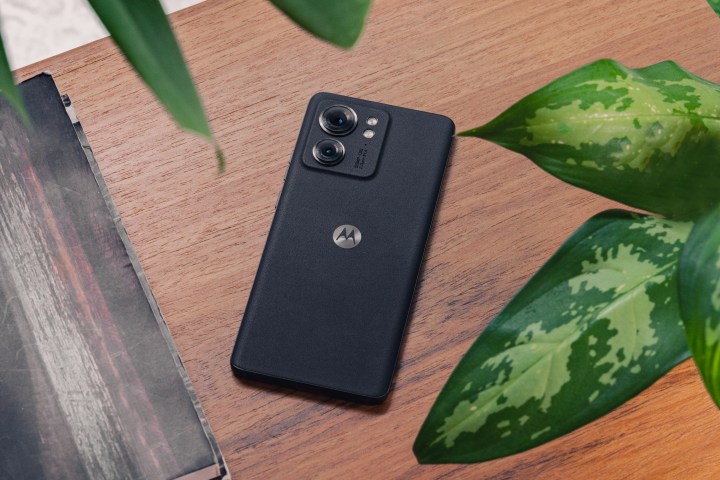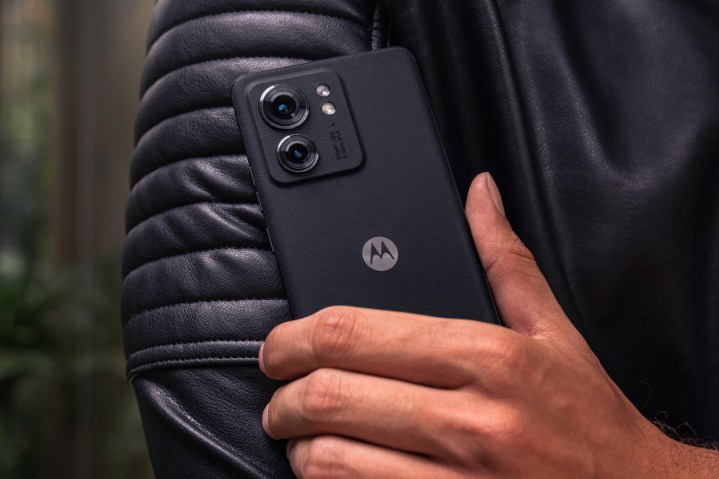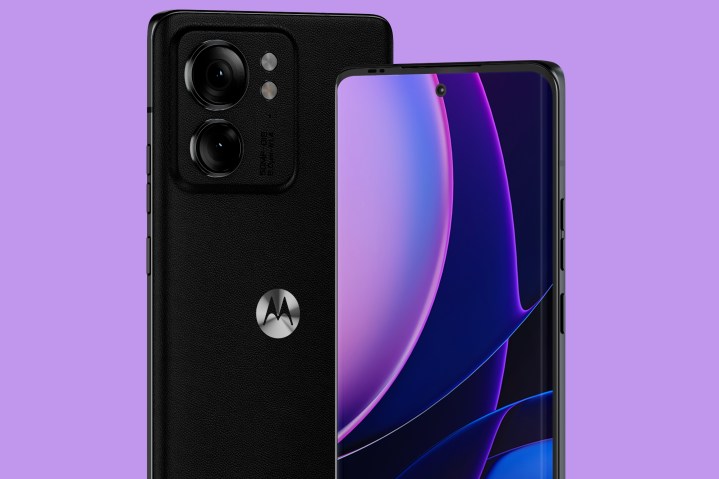
Motorola is bringing a new midrange device to the market, and this one not only undercuts the Google Pixel 8 by $100, but it also offers a few neat conveniences of its own. Say hello to the Motorola Edge (2023), a sleek phone that serves curved glass aesthetics and leather-clad build at a starting price of $599 in the U.S.
The looks of the latest Edge are familiar to its predecessors, but this one offers MediaTek’s Dimensity 7030 chipset paired with 8GB of RAM and 256GB of onboard storage. The phone runs Android 13, but Motorola won’t say how many OS updates it will get. Plus, there is no charging adapter in the retail box.

Up front is a 6.6-inch HDR-ready FHD+ (2400 x 1080 pixels) OLED display with a peak refresh rate of 144Hz and a maximum brightness output of 1,200 nits. The curved glass approach looks neat, and Motorola claims the Edge (2023) build is IP68 certified, which means it can handle occasional water splashes without frying its circuit board.
One of the biggest strengths of the phone is that it offers a 4,400mAh battery that supports 68W fast charging, over twice that of the Pixel 8. Motorola says 10 minutes of charging will be good enough for a full day’s use, but those metrics are subjective. Thankfully, you also get support for 15W wireless charging and the ability to share power with other devices in the same wireless fashion at a 5W rate.
At the back is a 50-megapixel optically stabilized main camera with support for features such as Active Photos, Night Vision, and 4K capture at 30fps. The primary camera offers an impressively wide f/1.4 aperture and relies on 4-in-1 pixel binning to process light data on 2-micron super-pixels.

In simple words, it can let in more light and produce shots with increased detail and depth. The ultrawide camera relies on a 13-megapixel sensor which also takes digitally cropped macro shots, while selfie duties have been deputed to a 32-megapixel snapper.
The Motorola Edge (2023) costs $600 and is now available from the company’s official website, Amazon, and Best Buy. It comes in a sole Eclipse Black color with a vegan leather finish.

The latest Motorola offering seems like a value-centric phone for its asking price, but the competition is hotter than ever. Google’s Pixel 8 offers faster silicon, Android OS upgrades for the next seven years, and extremely good cameras married to feature-rich software. Samsung’s Galaxy S23 FE also roams around in the same price bracket, and you can easily score a refurbished or discounted yesteryear mainline iPhone for that asking price.
Still, it’s worth keeping an eye on the Motorola Edge (2023) if you’re in the market for a phone under the $600 mark. We’ll be testing the Edge (2023) as soon as we can to see if it’s worth that amount of cash, so stay tuned for a full review coming soon.
Editors' Recommendations
- Samsung just launched a $400 phone in the U.S., and it looks great
- Motorola just announced three new phones, and I need them right now
- Google just released the first Android 15 beta. Here’s what’s new
- This Google Pixel 8a leak just spoiled everything about the phone
- Motorola’s new Android phone looks amazing, but there’s a catch




